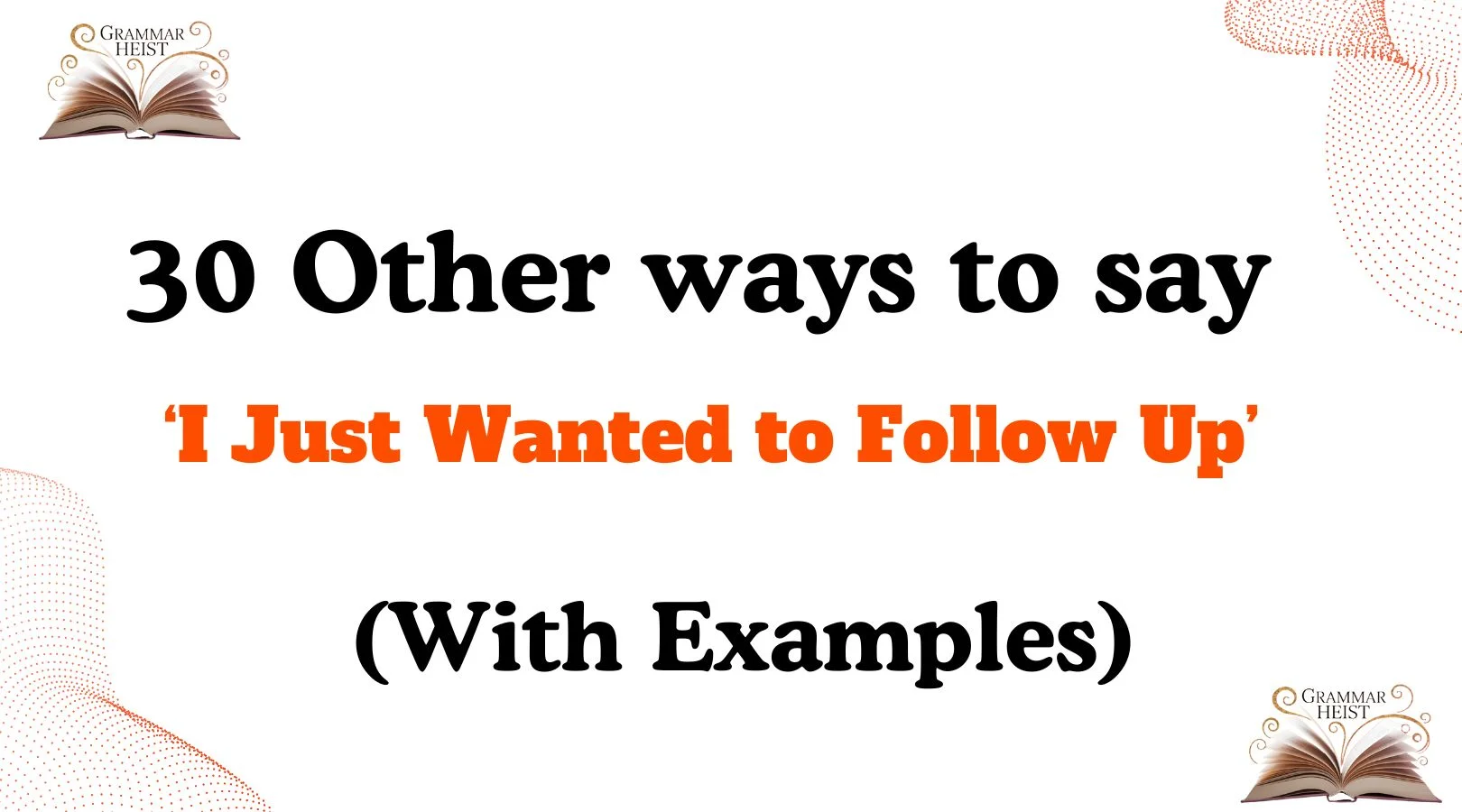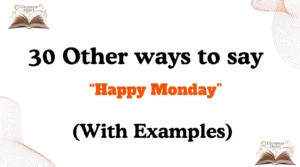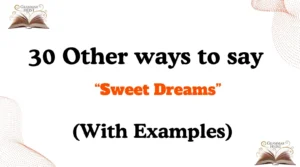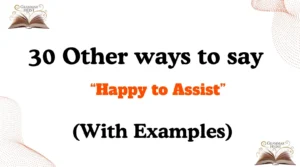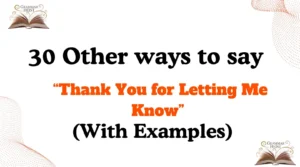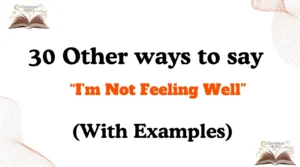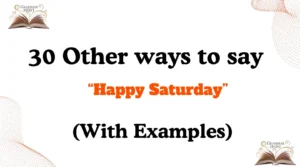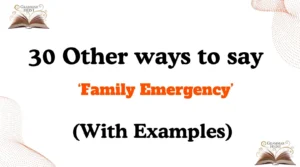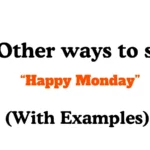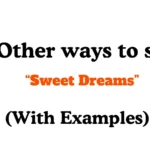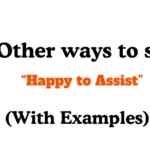Finding the right words to express care, respect, and professionalism can make a big difference in communication. Whether you’re writing to a colleague, a client, or a friend, the phrase “I just wanted to follow up” can sometimes feel repetitive or too formal. By choosing alternative phrases, you can make your message sound warmer, more personal, and more engaging, while still keeping the intent clear.
Below, you’ll discover 30 thoughtful alternatives, each with examples and guidance on how to use them in real-life scenarios.
What Does “I Just Wanted to Follow Up” Mean?
The phrase “I just wanted to follow up” is commonly used in professional and casual communication to remind someone about a previous conversation, request, or task. It’s a way of politely checking in without sounding pushy.
Is It Professional/Polite to Say “I Just Wanted to Follow Up”?
Yes, it is professional and polite, but it can sometimes feel overused or too formal. By using fresh alternatives, you can maintain professionalism while adding a personal and empathetic touch.
Pros or Cons of Using “I Just Wanted to Follow Up”
Pros:
- Clear and universally understood
- Professional and respectful
- Keeps communication straightforward
Cons:
- Can feel repetitive or generic
- Lacks warmth in personal settings
- May unintentionally sound impatient if used too often
Synonyms For “I Just Wanted to Follow Up”
- Just Checking In
- I Wanted to Touch Base
- Following Up to See
- I Wanted to Circle Back
- I’m Reaching Out Again
- I’d Like to Revisit
- I Wanted to Follow Up on My Previous Email
- Just Making Sure This Didn’t Slip Through
- Wanted to Confirm
- I’d Appreciate an Update
- I’m Checking Back
- I Wanted to Remind You
- I Wanted to See Where Things Stand
- I Wanted to Get Back to You
- I’d Love to Hear Back
- I’m Touching In
- I’m Hoping for an Update
- Could You Kindly Let Me Know
- I Wanted to Double-Check
- I’m Following Through
- I’m Checking if There’s Any News
- I’m Touching Base Again
- I’m Looking for an Update
- I Wanted to Keep in Touch
- I Wanted to Reach Back Out
- I’m Checking Whether You Had a Chance
- I’m Hoping to Hear from You
- I Wanted to Follow Through
- I Wanted to Circle in Again
- I’m Checking Back Once More
1. Just Checking In
Scenario: You want to gently remind someone about a previous request.
Examples:
- “Hi Sarah, just checking in to see if you had a chance to review my proposal.”
- “I’m just checking in to confirm if tomorrow’s meeting is still on.”
- “Just checking in to see if you need any extra details from my side.”
Tone: Warm, casual, friendly.
Explanation: This phrase is simple and approachable, making it less formal while still polite.
2. I Wanted to Touch Base
Scenario: You’re reaching out to confirm updates or alignment.
Examples:
- “I wanted to touch base regarding the design draft we discussed.”
- “Touching base to confirm the deadlines for next week’s rollout.”
- “Just wanted to touch base about the next steps.”
Tone: Professional, collaborative.
Explanation: “Touch base” feels conversational and works well in team or client communication.
3. Following Up to See
Scenario: You want to politely remind someone without sounding pushy.
Examples:
- “Following up to see if you’ve had a chance to look over the report.”
- “I’m following up to see if you need any clarification on my earlier email.”
- “Following up to see whether Thursday still works for you.”
Tone: Polite, respectful.
Explanation: A professional phrase that softens the reminder with curiosity instead of pressure.
4. I Wanted to Circle Back
Scenario: Revisiting a past discussion or request.
Examples:
- “I wanted to circle back on the conversation we had about budgeting.”
- “Just circling back to make sure we’re aligned.”
- “Circling back on my previous email to confirm your feedback.”
Tone: Professional, slightly casual.
Explanation: “Circle back” feels dynamic and works well in business contexts.
5. I’m Reaching Out Again
Scenario: You’ve already contacted the person once and want to follow up respectfully.
Examples:
- “I’m reaching out again to confirm whether you’ve had time to review the document.”
- “Reaching out again about the upcoming partnership opportunity.”
- “I’m reaching out again to ensure this didn’t get buried in your inbox.”
Tone: Respectful, considerate.
Explanation: Acknowledge that this isn’t your first attempt while keeping the tone polite and non-demanding.
6. I’d Like to Revisit
Scenario: You’re returning to an earlier discussion or idea.
Examples:
- “I’d like to revisit our conversation on pricing options.”
- “Revisiting the proposal I sent last week to see if it’s a good fit.”
- “I’d like to revisit the next steps we outlined.”
Tone: Professional, thoughtful.
Explanation: “Revisit” shows care and intention rather than impatience.
7. I Wanted to Follow Up on My Previous Email
Scenario: You’re pointing to a specific past message.
Examples:
- “I wanted to follow up on my previous email regarding scheduling.”
- “Following up on my earlier note about the event logistics.”
- “Just following up on my email from last week to confirm your thoughts.”
Tone: Clear, formal.
Explanation: Keeps things direct and professional, especially for email chains.
8. Just Making Sure This Didn’t Slip Through
Scenario: You suspect the message might have been overlooked.
Examples:
- “Just making sure this didn’t slip through—were you able to check the draft?”
- “Making sure my earlier email didn’t get lost.”
- “Just checking to ensure this didn’t slip through the cracks.”
Tone: Gentle, understanding.
Explanation: Adds empathy by acknowledging busy schedules.
9. Wanted to Confirm
Scenario: You’re seeking clarity or verification.
Examples:
- “Wanted to confirm if Friday works for our meeting.”
- “Just wanted to confirm you received the file.”
- “Wanted to confirm whether you’re still interested.”
Tone: Direct, polite.
Explanation: Short and clear, great for busy professionals.
10. I’d Appreciate an Update
Scenario: You need progress details.
Examples:
- “I’d appreciate an update on the project timeline.”
- “Would appreciate an update on the hiring process.”
- “I’d really appreciate an update on where things stand.”
Tone: Respectful, professional.
Explanation: Emphasizes gratitude while requesting.
11. I’m Checking Back
Scenario: When you’re politely reminding someone without sounding repetitive.
Examples:
- “I’m checking back to see if you had time to review the proposal.”
- “Checking back to confirm if tomorrow’s call works.”
- “I’m checking back regarding the documents I sent earlier.”
Tone: Neutral, polite.
Explanation: Simple and professional, avoids sounding demanding.
12. I Wanted to Remind You
Scenario: When something important shouldn’t be missed.
Examples:
- “I wanted to remind you of the upcoming deadline.”
- “Just reminding you about our scheduled meeting.”
- “I wanted to remind you about the feedback request I sent.”
Tone: Clear, gentle.
Explanation: Direct yet considerate, perfect for deadlines.
13. I Wanted to See Where Things Stand
Scenario: Checking progress in an ongoing process.
Examples:
- “I wanted to see where things stand with the client agreement.”
- “Just wanted to see where things stand with the report edits.”
- “Checking where things stand on your end before moving forward.”
Tone: Professional, progress-oriented.
Explanation: Encourages an update without pressure.
14. I Wanted to Get Back to You
Scenario: Re-engaging after a previous interaction.
Examples:
- “I wanted to get back to you regarding our last conversation.”
- “Getting back to you to confirm the timeline.”
- “I wanted to get back to you about the suggestions you shared.”
Tone: Professional, respectful.
Explanation: Feels more like continuing a dialogue than a reminder.
15. I’d Love to Hear Back
Scenario: When you want to invite a reply warmly.
Examples:
- “I’d love to hear back about your thoughts on the proposal.”
- “Really would love to hear back when you have time.”
- “I’d love to hear back regarding the scheduling options.”
Tone: Warm, engaging.
Explanation: Adds a personal touch, making the follow-up sound friendly.
16. I’m Touching In
Scenario: Short check-in to show attentiveness.
Examples:
- “I’m touching in to see how things are progressing.”
- “Touching in to check if you received my last note.”
- “I’m touching in on the proposal I sent last week.”
Tone: Informal, approachable.
Explanation: Works well in friendly or casual professional contexts.
17. I’m Hoping for an Update
Scenario: You want to encourage a reply with warmth.
Examples:
- “I’m hoping for an update on the design review.”
- “Hoping for an update on the event details when you get a chance.”
- “I’m hoping for an update on where things stand with the vendor.”
Tone: Warm, polite.
Explanation: Sounds optimistic and patient, not demanding.
18. Could You Kindly Let Me Know
Scenario: When politeness is key, especially with clients.
Examples:
- “Could you kindly let me know if my proposal works for you?”
- “Kindly let me know if tomorrow’s schedule is confirmed.”
- “Could you kindly let me know your thoughts when possible?”
Tone: Formal, respectful.
Explanation: Emphasizes respect and courtesy.
19. I Wanted to Double-Check
Scenario: Clarifying details or confirming agreements.
Examples:
- “I wanted to double-check if the venue is finalized.”
- “Double-checking that we’re aligned on the project scope.”
- “I just wanted to double-check that you received my earlier email.”
Tone: Professional, careful.
Explanation: Suggests thoroughness and reliability.
20. I’m Following Through
Scenario: When you’re keeping accountability.
Examples:
- “I’m following through to confirm our deadlines.”
- “Following through on the discussion we had last week.”
- “I’m following through regarding the action items we agreed on.”
Tone: Responsible, proactive.
Explanation: Reflects commitment and accountability.
21. I’m Checking if There’s Any News
Scenario: Casual request for updates.
Examples:
- “I’m checking if there’s any news about the role.”
- “Just checking if there’s any news on the approval process.”
- “Checking if there’s any news regarding the shipment.”
Tone: Light, conversational.
Explanation: Less formal and friendly.
22. I’m Touching Base Again
Scenario: You’ve checked in before but need another follow-up.
Examples:
- “I’m touching base again about the event details.”
- “Touching base again on my earlier email.”
- “I’m touching base again to see if you’ve had time to review.”
Tone: Friendly, persistent but polite.
Explanation: Acknowledges repeat contact while keeping it kind.
23. I’m Looking for an Update
Scenario: When progress or status is needed.
Examples:
- “I’m looking for an update on the finance report.”
- “Looking for an update regarding the next steps.”
- “I’m looking for an update to share with my team.”
Tone: Professional, straightforward.
Explanation: Direct yet respectful, great for workplace updates.
24. I Wanted to Keep in Touch
Scenario: Strengthening connections beyond just a reminder.
Examples:
- “I wanted to keep in touch regarding the project timeline.”
- “Just keeping in touch to ensure everything’s on track.”
- “I wanted to keep in touch to see if you need support.”
Tone: Warm, relational.
Explanation: Adds a human element, not just transactional.
25. I Wanted to Reach Back Out
Scenario: After time has passed since the last message.
Examples:
- “I wanted to reach back out about our conversation.”
- “Reaching back out regarding the partnership opportunity.”
- “I wanted to reach back out to check if you had any updates.”
Tone: Respectful, considerate.
Explanation: A good balance between professional and casual.
26. I’m Checking Whether You Had a Chance
Scenario: Asking gently about pending tasks.
Examples:
- “I’m checking whether you had a chance to review the file.”
- “Checking whether you had a chance to look over my draft.”
- “I’m checking whether you had a chance to finalize the schedule.”
Tone: Patient, polite.
Explanation: Sounds understanding and non-pressuring.
27. I’m Hoping to Hear from You
Scenario: Encouraging a reply while keeping it warm.
Examples:
- “I’m hoping to hear from you regarding the update.”
- “Hoping to hear from you once you’ve reviewed the document.”
- “I’m hoping to hear from you on next steps.”
Tone: Warm, hopeful.
Explanation: Softens the follow-up by expressing hope rather than demand.
28. I Wanted to Follow Through
Scenario: Following accountability and next steps.
Examples:
- “I wanted to follow through on the action plan.”
- “Following through on my earlier request for details.”
- “I wanted to follow through regarding scheduling options.”
Tone: Responsible, polite.
Explanation: Emphasizes responsibility and diligence.
29. I Wanted to Circle in Again
Scenario: Revisiting an important topic.
Examples:
- “I wanted to circle in again about the vendor quotes.”
- “Circling in again on the design approvals.”
- “I wanted to circle in again to finalize next week’s schedule.”
Tone: Professional, collaborative.
Explanation: Refreshes the conversation while showing careful attention.
30. I’m Checking Back Once More
Scenario: Final polite reminder.
Examples:
- “I’m checking back once more to see if this works for you.”
- “Checking back once more regarding the proposal I sent.”
- “I’m checking back once more before closing this file.”
Tone: Respectful, gentle persistence.
Explanation: Communicates finality while staying polite.
Conclusion
Using alternatives to “I just wanted to follow up” can make your messages feel more personal, empathetic, and professional. Whether you’re reminding someone, asking for updates, or keeping in touch, these phrases help you express care while still respecting the recipient’s time.

Emma Brooke is a passionate advocate for effective communication and language mastery. As a dedicated professional in the field of grammar and writing, Emma brings a wealth of knowledge and expertise to those seeking to improve their linguistic skills. With a focus on clarity, precision, and style, Emma Brooke is committed to helping individuals refine their language use to communicate confidently and effectively.
